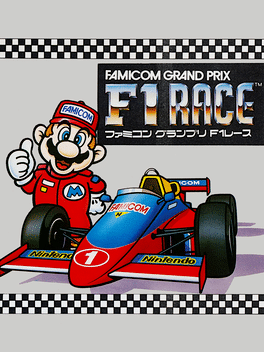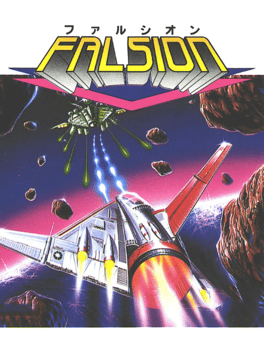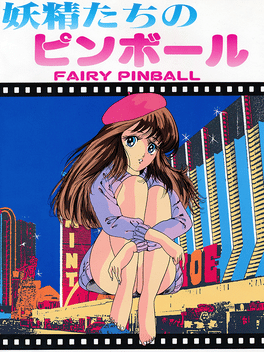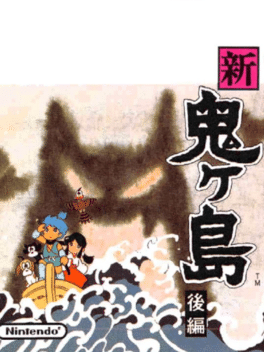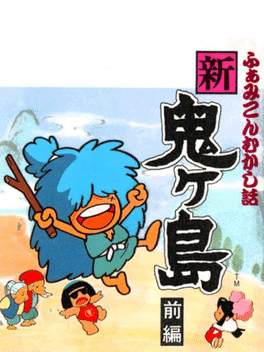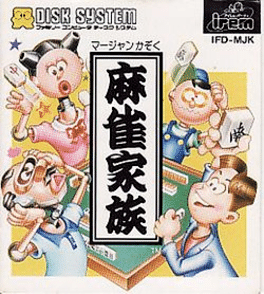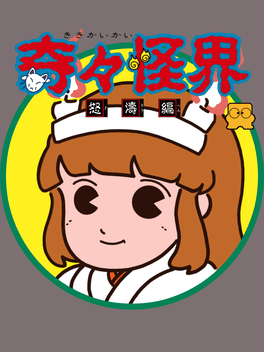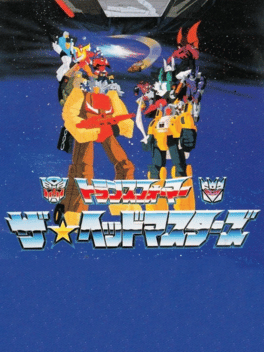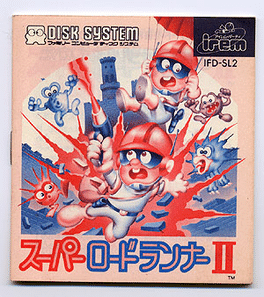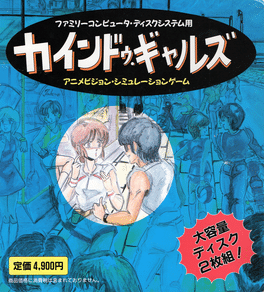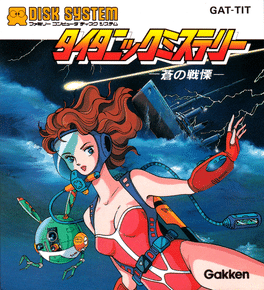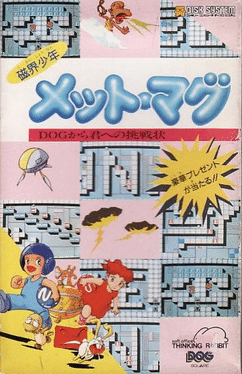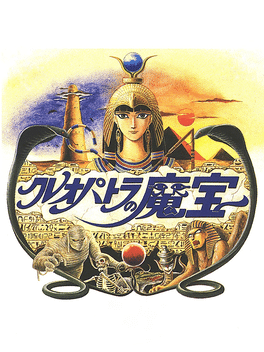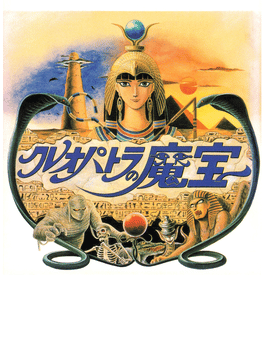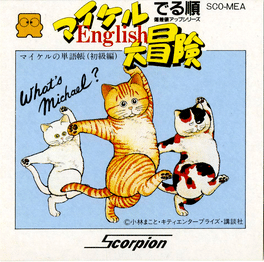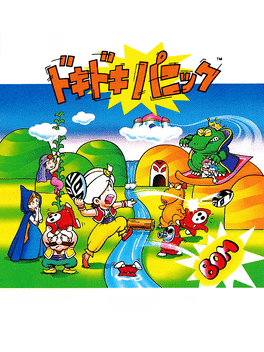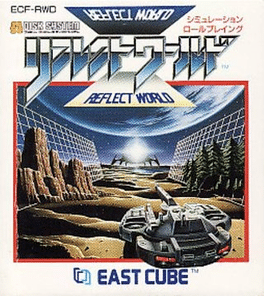New Fds Games - Page 5
-
Famicom Grand Prix: F-1 Race
1987
Famicom Grand Prix: F-1 Race is a Japan-exclusive racing game starring Mario in Formula One cars. In the game, players can choose to play alone or with other cars. Cars have a certain amount of health and fuel, which decreases whenever the player crashes into a wall or another car, as well as whenever he or she drives off of the road. This game, along with its sequel, was possibly an ancestor to the Mario Kart series, most likely due to the fact that it features Mario and possesses similar 2D racing mechanics, which was later carried on to Super Mario Kart. -
Falsion
1987
Falsion
1987
A Konami shoot-em-up depicted from behind the ship on a Z axis, similar to After Burner or Space Harrier, for the Famicom Disk System. It has the distinction of being one of the few games that worked with the Famicom 3D imaging system. -
Fairy Pinball: Yousei-tachi no Pinball
1987
An adult pinball game in which you can play two tables and try to get a high enough score to watch a girl undress. The two tables are a space based one called Asteroid, and a naval war based one called Midway. -
Famicom Mukashibanashi: Shin Onigashima - Kouhen
1987
Shin Onigashima is a two disk adventure game released on the Famicom Disk System. Despite being first-party software, it was never released outside of Japan. A two-disk adventure game, Shin Onigashima (or to give it its full title "Famicom Mukashi Banashi: Shin Onigashima", or "Famicom Fairy Tales: New Oni Island" thereabouts) was released in two parts: The first on September 4th 1987 and the second on September 20 1987. This latter part needs a cleared save file from the first part to play, meaning it is functionally an expansion of that game. The game is depicted like other adventure games for the system, such as Portopia or Hokkaido Serial Murders, though with a far gentler fairy tale presentation rather than a gritty crime thriller. The game's story is based on popular centuries-old Japanese folklore, such as the story of Momotaro and tales depicting the demonic Oni and their mischief. The original characters created for this game would be later referenced by future Nintendo products with retrospective elem -
Famicom Mukashibanashi: Shin Onigashima - Zenpen
1987
Shin Onigashima is a two disk adventure game released on the Famicom Disk System. Despite being first-party software, it was never released outside of Japan. A two-disk adventure game, Shin Onigashima (or to give it its full title "Famicom Mukashi Banashi: Shin Onigashima", or "Famicom Fairy Tales: New Oni Island" thereabouts) was released in two parts: The first on September 4th 1987 and the second on September 20 1987. The Game stops halfway through the story. The game is depicted like other adventure games for the system, such as Portopia or Hokkaido Serial Murders, though with a far gentler fairy tale presentation rather than a gritty crime thriller. The game's story is based on popular centuries-old Japanese folklore, such as the story of Momotaro and tales depicting the demonic Oni and their mischief. The original characters created for this game would be later referenced by future Nintendo products with retrospective elements, such as Captain Rainbow or the Super Smash Bros series (SSB Brawl even had a re -
Mahjong Kazoku
1987
Mahjong Kazoku
1987
Mahjong Kazoku is a Mahjong game released only in Japan for the Famicom Disk System. Mahjong Kazoku ("Mahjong Family") is a standard Mahjong simulation game for Nintendo's Famicom Disk System. It is a one-on-one version of the game, rather than the standard four-player board game arrangement, and it incorporates many of the various and byzantine scoring rules of the game. Irem developed and published the game but left a mysterious licensing credit to Ox Inc. on the title screen. It's possible the game is a port of an obscure Japanese Mahjong computer game, or at least borrows some of its coding for the AI opponent or scoring systems. -
Famicom Mukashibanashi: Shin Onigashima
1987
Famicom Mukashibanashi: Shin Onigashima is a Famicom Disk System text adventure game. The plot revolves around an elderly couple with no children who adopt an infant boy and girl. When the children turn six, a dragon appears in the country, and starts turning people into Oni who steal the souls of others. The Oni arrive at their home and steal the elderly couple's souls. The children decide to save their adoptive parents. The game is controlled by selecting commands such as the "Change Character" command, which allows you to switch between controlling Donbe (the boy) and Hikari (the girl). The game progress is shown by changes in the in-game graphics. The Famicom Disk System version comes on two disks released on different dates. Disk 2 cannot be played without completing Disk 1, and is switched while the system is still powered on. All later releases are switch-free. -
KiKi KaiKai: Dotou-hen
1987
One night, while Sayo-chan is fanning a ceremonial fire, she is visited by the Seven Lucky Gods, who warn her of a great, impending danger. Suddenly, a band of mischievous goblins appear and kidnap the gods, quickly retreating to a faraway mountain range. Sayo-chan, determined to help the gods, sets off on a journey across the countryside, where she confronts a number of strange creatures from Japanese mythology, including yokai, obake, and yurei-like monsters. After defeating several powerful goblin leaders, Sayo must battle their leader, the ancient serpent Orochi -
Transformers: The Headmasters
1987
An action game based on the Transformers license, developed and published by Takara for the Famicom Disk System. The game follows Chromedome on a quest to free his allies and free several planets from the control of several Decepticon warlords. -
Super Lode Runner II
1987
Super Lode Runner II
1987
The second compilation of levels from Irem's Lode Runner Arcade series. Developed for the Famicom Disk System, it was never released outside of Japan. Gameplay consists of collecting all the gold of a level and then exiting. Be sure to avoid enemies while doing so, and team up with a friend to experience the co-op levels -
Kind Gals
1987
-
Titanic Mystery: Ao no Senritsu
1987
2:20 AM. 15th April, 1912 The greatest ocean liner in history just sank into the Atlantic. The R.M.S. Titanic. YOU'VE got a reputation for succeeding where others have failed. That's why YOU have been selected to head the Titanic: Recovery Mission. Every previous effort to raise the lost legend has come up empty, but your skills, financial connections, and leadership abilities make YOU the logical choice. -
Almana no Kiseki
1987
Almana no Kiseki
1987
A magic red jewel, known as the Arumana, is stolen from an unnamed village. A thief runs off with the jewel and turns the entire village into stone. Kaito must travel through six cavernous levels in search of the stolen jewel, Arumana. The player begins with thirty throwing knives as his weapon of attack. As they venture through the levels they can find various other weapons. These include bombs, a handgun, bolas, a crystal ball that destroys everything on screen, and mines. He must destroy various cave dwelling creatures as well as soldiers, who sometimes drop weapons. -
Jikai Shounen Mettomag
1987
The player must solve 100 puzzles in the form of rooms that contain magnetized squares. The player assumes either a North or South magnet polarity as he or she collects all of the polarity orbs in each room before attempting to reach the exit. The polarity of the player affects how he or she interacts with the magnetized squares which can enable or hinder the player in his or her progress through the level. -
Exciting Billiard
1987
Exciting Billiard
1987
Exciting Billiard is a Sports game, developed and published by Konami, which was released in Japan in 1987. -
Cleopatra no Ma Takara
1987
A graphic adventure/RPG for the Famicom Disk System developed by Square. The goal is to track down Cleopatra's cursed treasure while saving the main character's archeologist father. -
Cleopatra no Mahou
1987
Cleopatra no Mahou
1987
Daisuke Kusano is the son of an archaeologist who disappeared while searching for the Tears of Isis, artifacts once owned by Cleopatra. During the man's excavation for the Tears, demons appeared and abducted him. The boy soon learns that he must find the Tears in order to save his father. -
Michael English Daibouken
1987
Michael English Daibouken is an educational game where the character of Michael, an orange cat, teaches kittens the various letters in the English language as well as some English vocabulary. Michael has to catch floating letters in order to spell out English words, while avoiding the incorrect letters. The game has various different backdrops, including space. The character of Michael comes from the Japanese serial manga strip "What's Michael", created by Makoto Kobayashi which might be considered analogous to Garfield, due to them both being orange cats. It varies between observing goofy pet behavior to more abstract tales of fantasy with anthropomorphized versions of the animal characters. -
Yume Koujou: Doki-doki Panic
1987
star 7While two children, Poke and Piki, are reading a story, a monstrous hand suddenly appears from inside the pages and kidnaps them. When the rest of the Dream Factory family hear their cries of help, they jump into the story and help save them from the evil Wart. The game was released as part of the Yume Koujou '87 event (sometimes referred as Dream Machine, in English), which was sponsored by Fuji TV, and stars its mascots. The game was edited and released as Super Mario Bros 2. Due to Nintendo of Japan feeling like their version of Super Mario Bros 2 would be too difficult and outdated by the time it got to the United States. -
Reflect World
1987
Reflect World
1987
Reflect World is a shooter with RPG elements developed by East Cube and released for the Famicom Disk System. Reflect World is a vehicle-based top-down shoot 'em up with a lot of RPG and simulation elements. The player controls a large and formidable tank as it makes its way across a wasteland, destroying enemies and tinkering with its many modes and functions. The game is extremely difficult to understand unless the player is knowledgeable in Japanese (the game was never released outside of Japan), the instruction manual or, preferably, both. The game was developed and published by East Cube, an obscure Japanese developer that largely focused on Japanese computer games. Reflect World is the only game they ever released on a Nintendo console.
